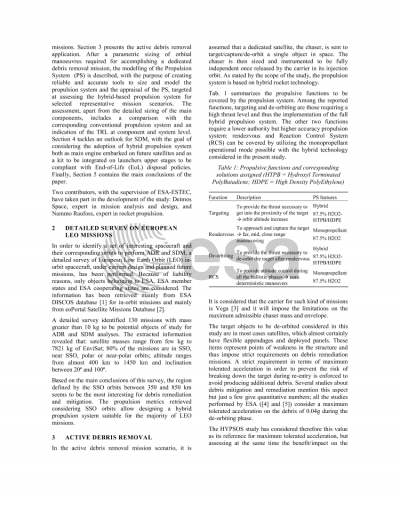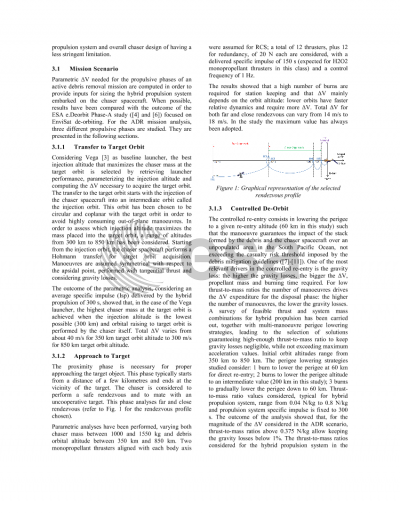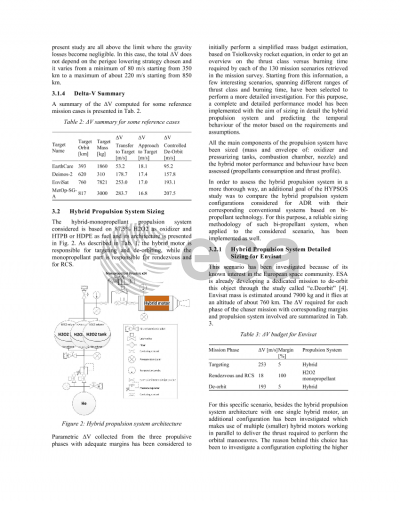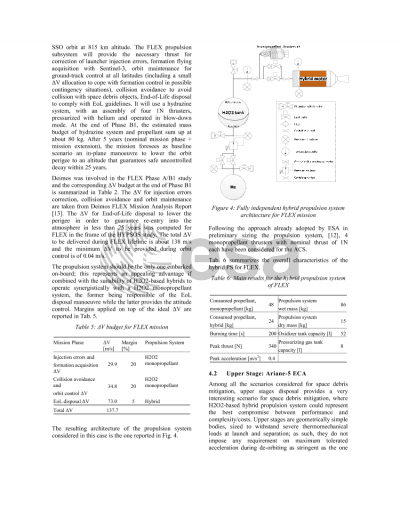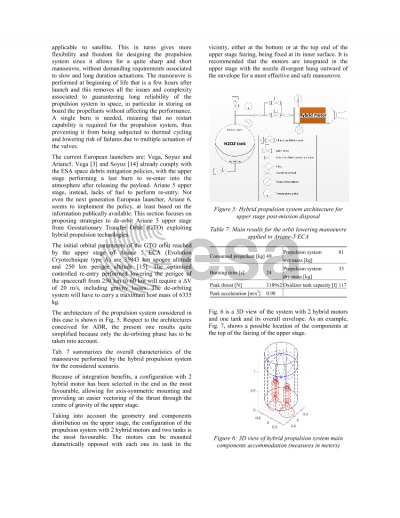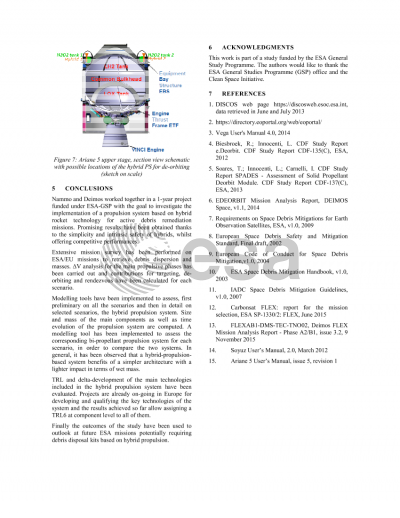Document details

Abstract
Hundreds of satellites populate the Earth-bounded orbits, and this number is rapidly increasing. These objects are a threat as they can collide with other satellites, in turn creating new debris objects. Several collisions have already occurred and the population of debris will keep growing if no measures are taken to mitigate the generation of space debris by implementing proper policies and mission design standards, as well as to remove space debris in the future.
This paper presents the results of an ESA General Studies Programme (GSP) study, dealing with the feasibility of performing active debris removal (ADR) by using a hybrid propulsion system on the chaser spacecraft. While the study focuses mainly on the use of a hybrid rocket propulsion system on-board a chaser spacecraft that performs ADR, it also preliminarily addresses the application of this innovative propulsion technology for debris mitigation purposes. Hybrid propulsion systems seem to be a promising alternative to conventional liquid propellant in-orbit propulsion systems, in terms of complexity, cost, operational advantages, whilst also offering the use of non-toxic fuel. The study is carried out by Deimos Space, expert in mission analysis, and Nammo Raufoss, expert in hybrid propulsion.
A survey of LEO in-orbit spacecraft, under current design and planned future missions, allows the identification of a set of orbits and satellites (about 130) that are interesting targets for an ADR mission. Parametric analyses, covering different target orbit altitudes and masses, are performed to compute the delta-V that a chaser spacecraft should provide to remove the identified objects. For the ADR mission analysis, three different propulsive phases are studied: 1) transfer to target orbit, considering Vega as baseline launcher and maximizing the chaser mass at target orbit; 2) approach to target, analysing far and close rendezvous; 3) de-orbit and re-entry, both controlled and un-controlled, considering different strategies and ballistic coefficients, typical thrust-to-mass ratios for hybrid propulsion system and gravity losses.
The parametric delta-V collected from the propulsive phases with adequate margins is considered as input for sizing the hybrid propulsion system for selected targets with the goal of identifying the most promising debris-altitude combinations that can be removed with such kind of technology. The hybrid propulsion system considered is based on 87.5% H2O2 as oxidizer and HTPB or HDPE as fuel. The hybrid motor is responsible for phases 1, targeting, and phase 3, de-orbiting. The monopropellant part is responsible for phase 2, rendezvous, and for RCS. All the main components of the propulsion system are sized and the hybrid motor performance and behaviour are assessed. A trade-off with chemical propulsion systems typically used on spacecraft is performed, identifying advantages of hybrid propulsion systems and technology gaps to cover.
Feasibility of performing post-mission disposal of future ESA missions in LEO and European upper stage rocket bodies in GTO by means of hybrid propulsion has also been addressed. Two representative LEO mission scenarios have been chosen for a detailed sizing of the hybrid propulsion system for debris remediation by implementing an un-controlled re-entry strategy: FLEX and Sentinel-2C. While controlled re-entry is proposed for Ariane 5 upper stage de-orbiting from GTO.
Preview

